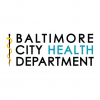Mayor's Heroin Treatment and Prevention Task Force
On July 13, 2015, the Mayor’s Heroin Treatment and Prevention Task Force called for 10 bold steps to attack the city’s epidemic heroin and opioid addiction problem. These steps included the creation of 24/7, “treatment-on-demand” facility for substance users and a public education campaign to encourage treatment and combat stigma. Convened by Mayor Stephanie Rawlings-Blake in October 2014, the Task Force was co-chaired by Bernard J. McBride, CEO Behavioral Health System Baltimore, and Dr. Samuel Ross, CEO of Bon Secours Baltimore Health System, and was comprised of 35 community leaders, public health experts and government representatives.
Among the Task Force’s 10 recommendations that the Baltimore City Health Department and its partners began implementing prior to the reports release are:
- Implementing a Citywide Heroin Overdose Plan that focuses on saving lives. This plan focuses on “hotspotting” to target treatment and strategies for those most at risk for overdose and ensuring widespread dissemination of the opioid antidote, naloxone.
- Developing a data-tracking system to provide timely information about the number of people with substance use disorders, fatal and near-fatal overdoses and the city’s overall capacity to provide drug treatment.
- Implementing an outreach campaign to educate people about substance use, de-stigmatize those who have substance use disorders and urge people with problems to seek treatment.
A public education campaign about overdose prevention was unveiled at the release. Its purpose is to decrease stigma and increase awareness of treatment and prevention via billboards, bus shelter ads, a new website (dontdie.org) and social media. The campaign informs the public that naloxone can save lives and that everyone should be trained to administer it.
There were 303 total drug and alcohol overdose deaths in Baltimore City in 2014, compared with 246 in 2013, a 23 percent increase. In 2014, 192 overdose deaths were heroin-related, compared with 150 in 2013. There are an estimated 18,900 individuals who use heroin in Baltimore.
The full text of the Task Force's report can be found here.
